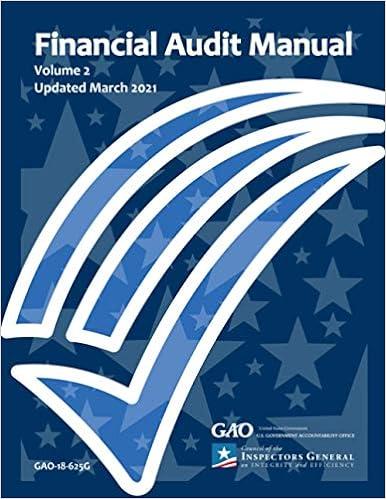Answered step by step
Verified Expert Solution
Question
1 Approved Answer
Case Study: Audit Procedures for Inventory Valuation Background: LMN Corporation, a manufacturing company, is undergoing its annual audit, with a focus on inventory valuation. Inventory
Case Study: Audit Procedures for Inventory Valuation
Background:
LMN Corporation, a manufacturing company, is undergoing its annual audit, with a focus on inventory valuation. Inventory is a significant asset for LMN and accurate valuation is crucial for presenting a true and fair view of the company's financial position.
Audit Procedures:
Understanding Inventory Systems:
The auditor begins by understanding LMN Corporation's inventory systems, including the methods used for recording purchases, production, and sales, such as FIFO FirstInFirstOut LIFO LastInFirstOut or weighted average cost.
Physical Inventory Count:
Conducts a physical inventory count to verify the existence and condition of inventory items. This involves selecting a sample of inventory items and physically counting them to compare against recorded quantities in the inventory records.
Valuation Method Assessment:
Assesses the appropriateness of LMNs chosen inventory valuation method based on industry standards and accounting principles. The auditor evaluates whether the chosen method accurately reflects the cost of inventory on hand.
Costing Accuracy Verification:
Verifies the accuracy of inventory costing, ensuring that direct costs eg purchase price, freight, and handling costs and indirect costs eg overhead expenses are appropriately allocated to inventory items.
Inventory Aging Analysis:
Analyzes the age of inventory to identify obsolete or slowmoving items that may require a lower valuation or potential writedown. This involves reviewing inventory turnover ratios and assessing the market demand for inventory items.
Assessment of Net Realizable Value:
Evaluates the net realizable value of inventory, considering factors such as market demand, selling prices, and obsolescence. This ensures that inventory is not overstated on the balance sheet.
Review of Inventory Reserves:
Reviews any inventory reserves or provisions established by LMN Corporation for potential losses on inventory. The auditor assesses the adequacy of these reserves based on historical trends and market conditions.
Comparison with Prior Periods:
Compares current inventory valuation with prior periods to identify any significant fluctuations or inconsistencies. This analysis helps detect unusual trends or errors in inventory valuation.
Objective Type Question:
Based on the case study, which audit procedure is primarily focused on verifying the existence and condition of inventory items?
A Valuation Method Assessment
B Physical Inventory Count
C Inventory Aging Analysis
D Assessment of Net Realizable Value
Step by Step Solution
There are 3 Steps involved in it
Step: 1

Get Instant Access to Expert-Tailored Solutions
See step-by-step solutions with expert insights and AI powered tools for academic success
Step: 2

Step: 3

Ace Your Homework with AI
Get the answers you need in no time with our AI-driven, step-by-step assistance
Get Started


